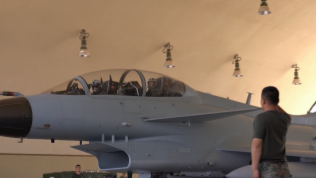BEIJING, July 7 -- Recently, a surgical team from the Hepatobiliary and Pancreatic Surgery Department of the Chinese PLA General Hospital overcame the problem of high latency in remote surgery through low Earth orbit (LEO) satellite communication technology, and completed remote surgery spanning hundreds of kilometers.
Inside a mobile surgical vehicle in Xiong’an New Area, Central China's Hebei Province, surgical commands were transmitted with precision to an operating room at the First Medical Center of the Chinese PLA General Hospital in Beijing, which is located hundreds of kilometers away. After 30 minutes, a robot-assisted left lateral hepatectomy was successfully completed, marking a milestone in "sky-ground-space coordinated" medical operations.
In the past, remote satellite surgeries relied on geostationary orbit satellites located approximately 36,000 kilometers above Earth. The vast distance caused delays in signal transmission, resulting in lag in the robot's response to surgical commands and delayed feedback of patients' vital signs—factors that posed risks to safety and reduced the flexibility of doctors.
This recent operation utilized LEO satellites orbiting at altitudes of 160 to 2,000 kilometers above Earth, drastically reducing signal transmission time. This greatly enhanced the real-time responsiveness and precision of the surgery.
It is reported that the advantages of LEO satellites extend far beyond transmission speed. The technology "does not depend on ground infrastructure, is immune to geological disasters, and is unrestricted by geography or time." This means the remote surgical system can be deployed in remote mountainous regions, deserts, or ships at sea — delivering life-saving medical care wherever and whenever needed.













